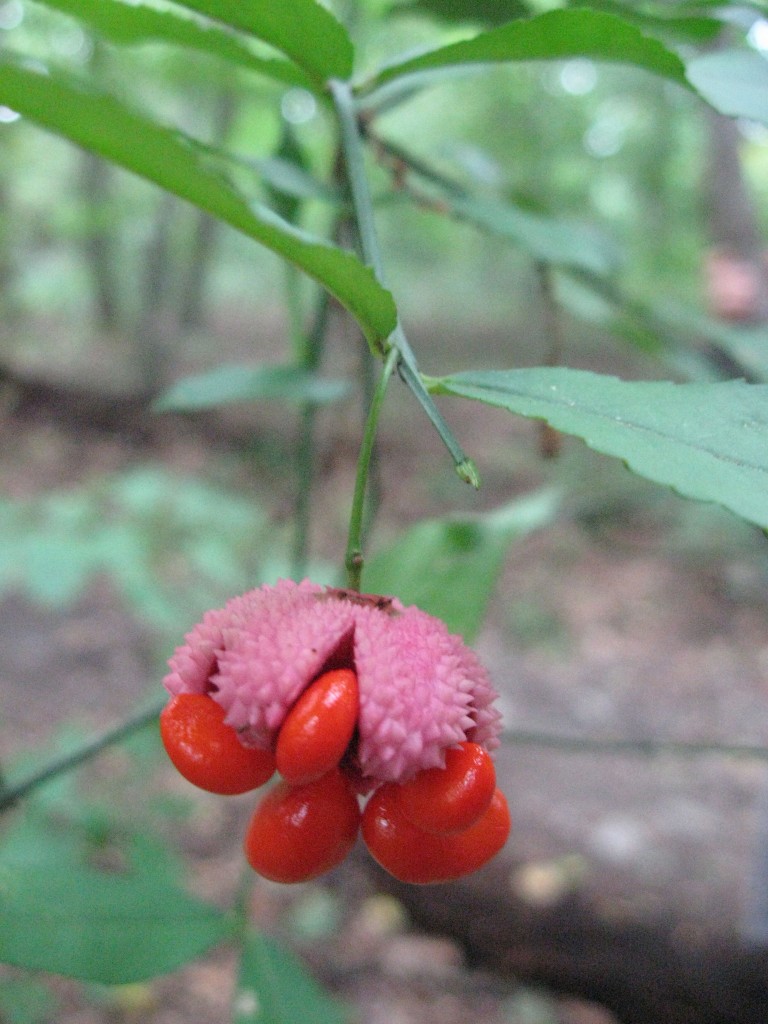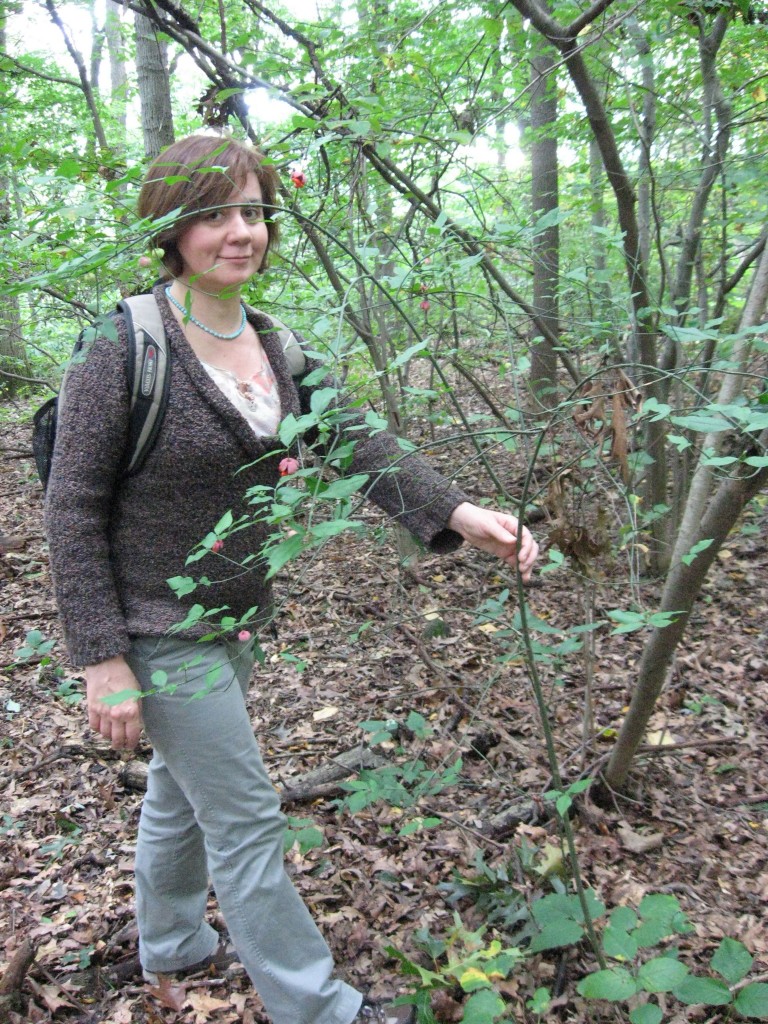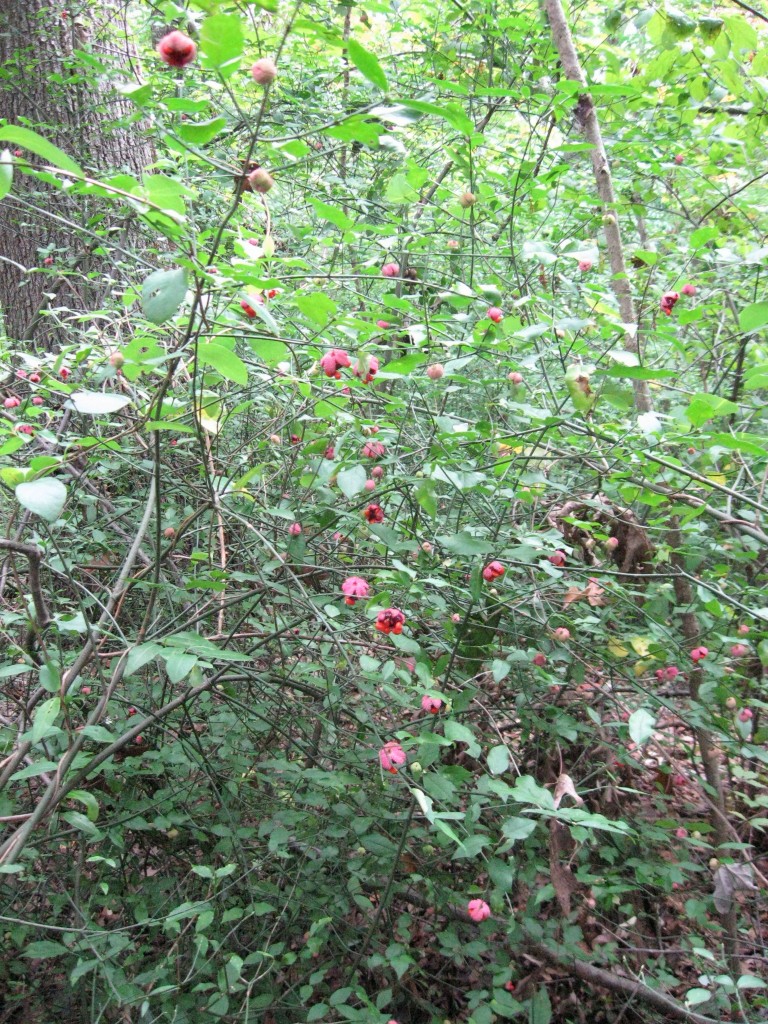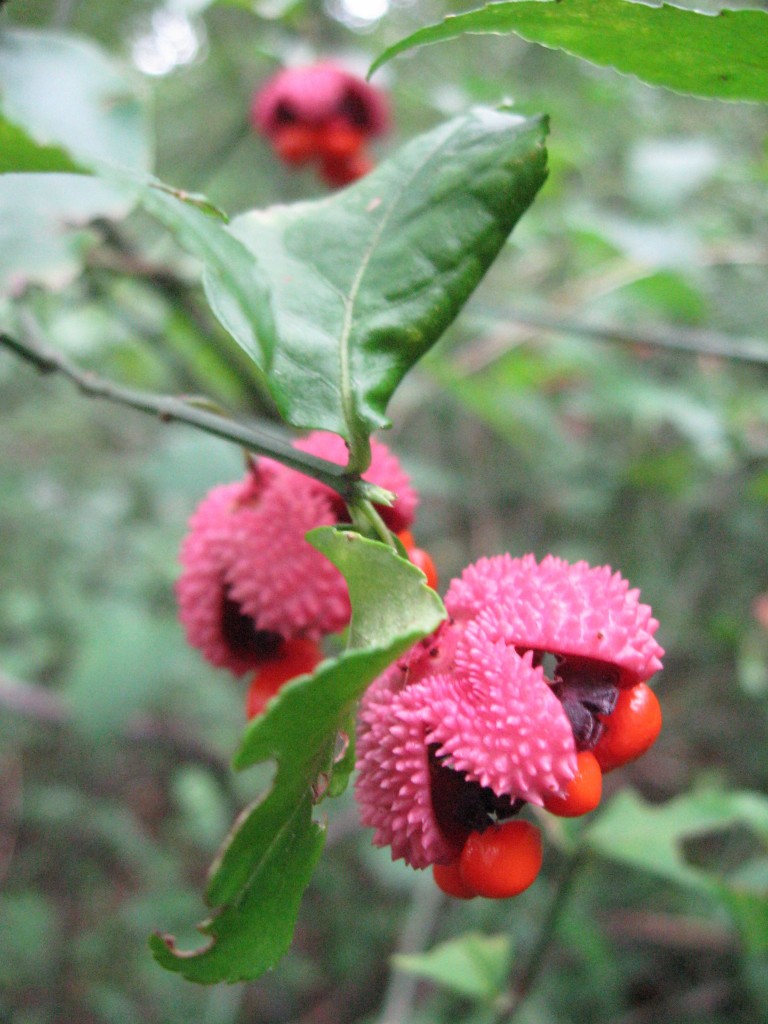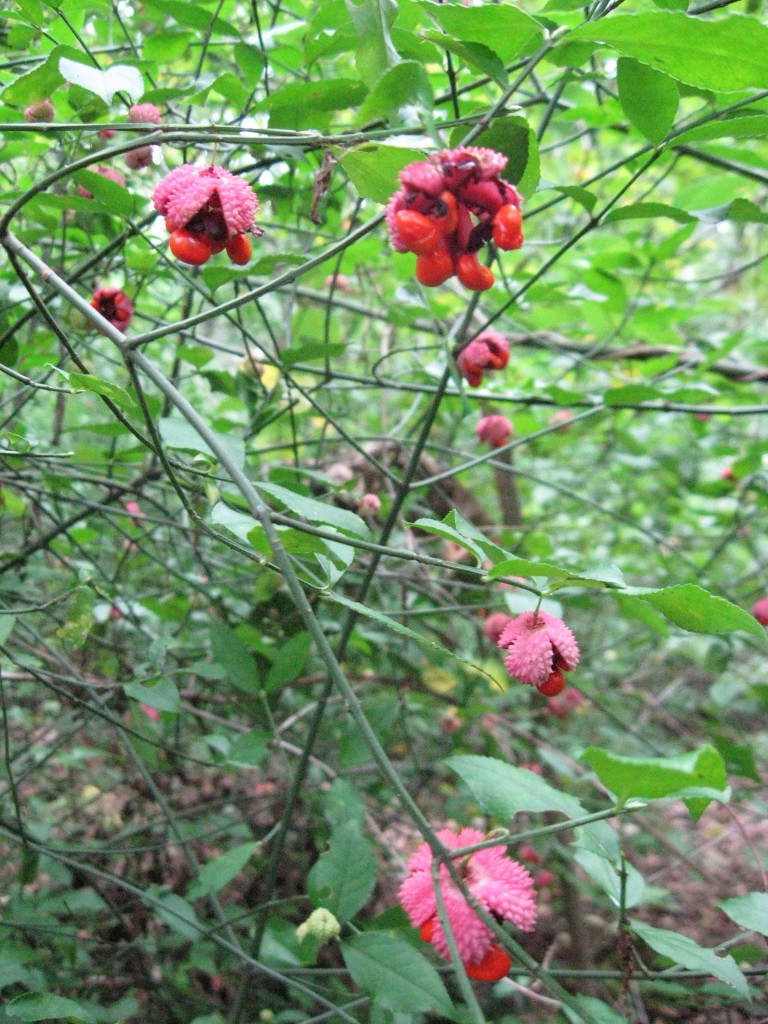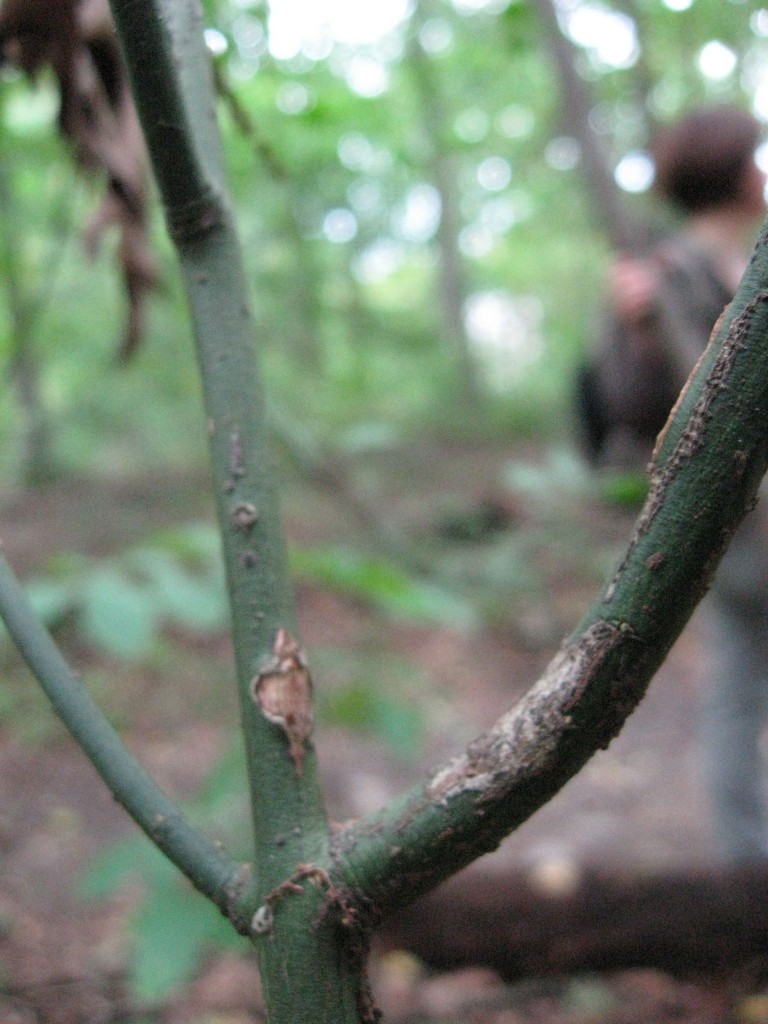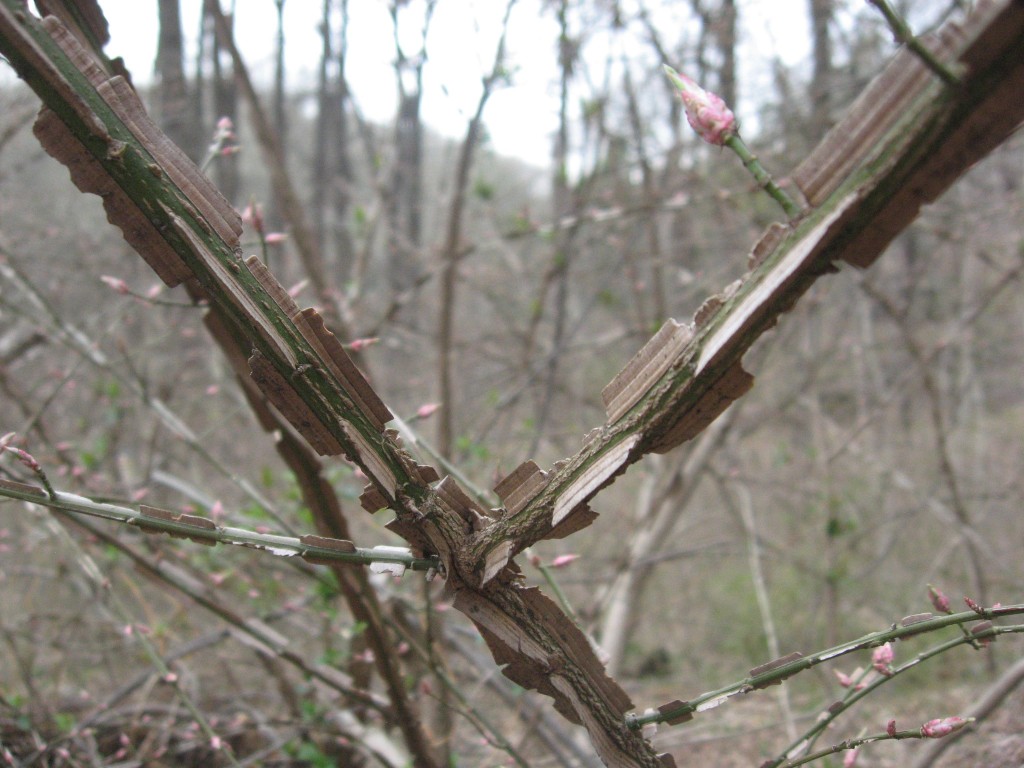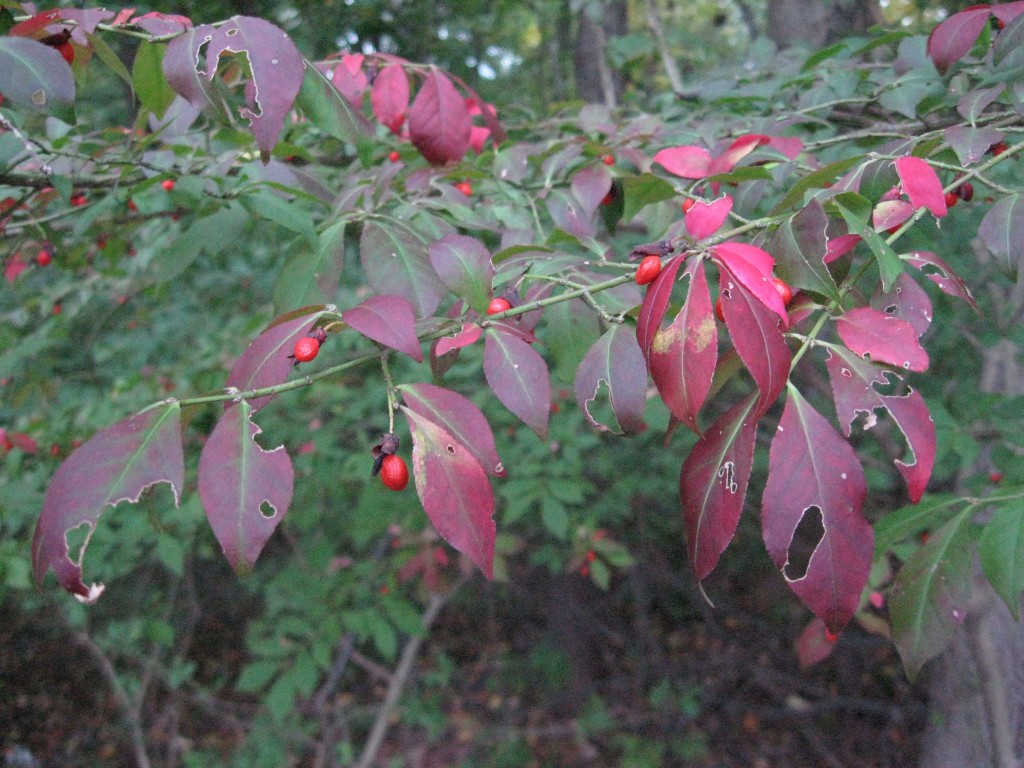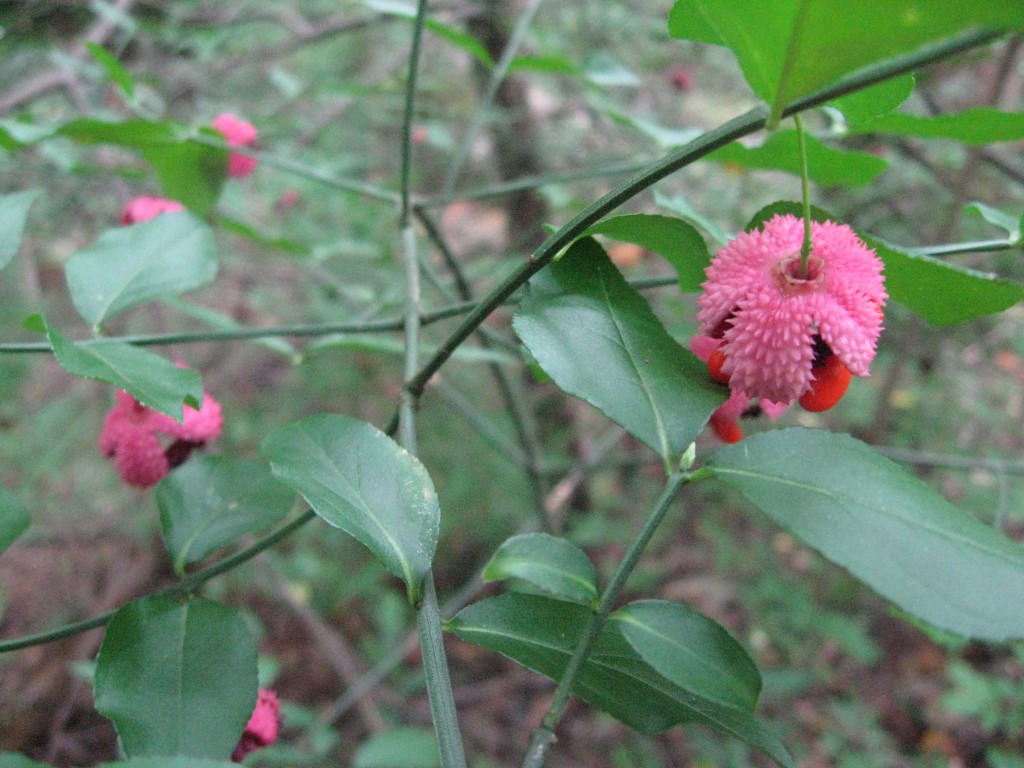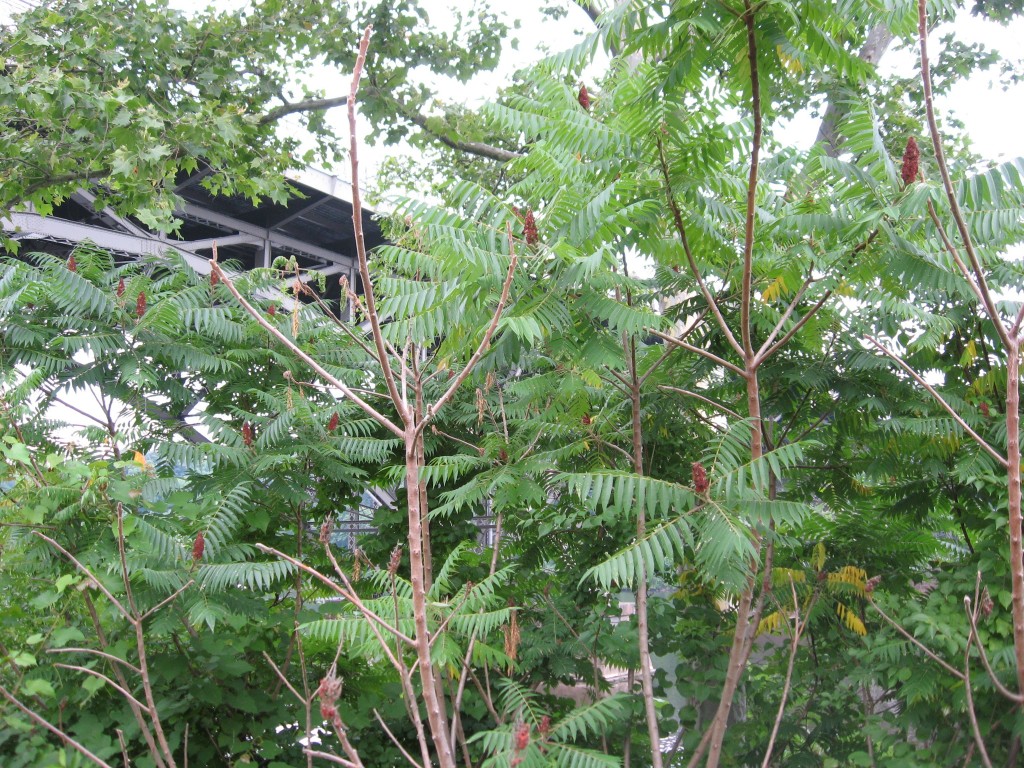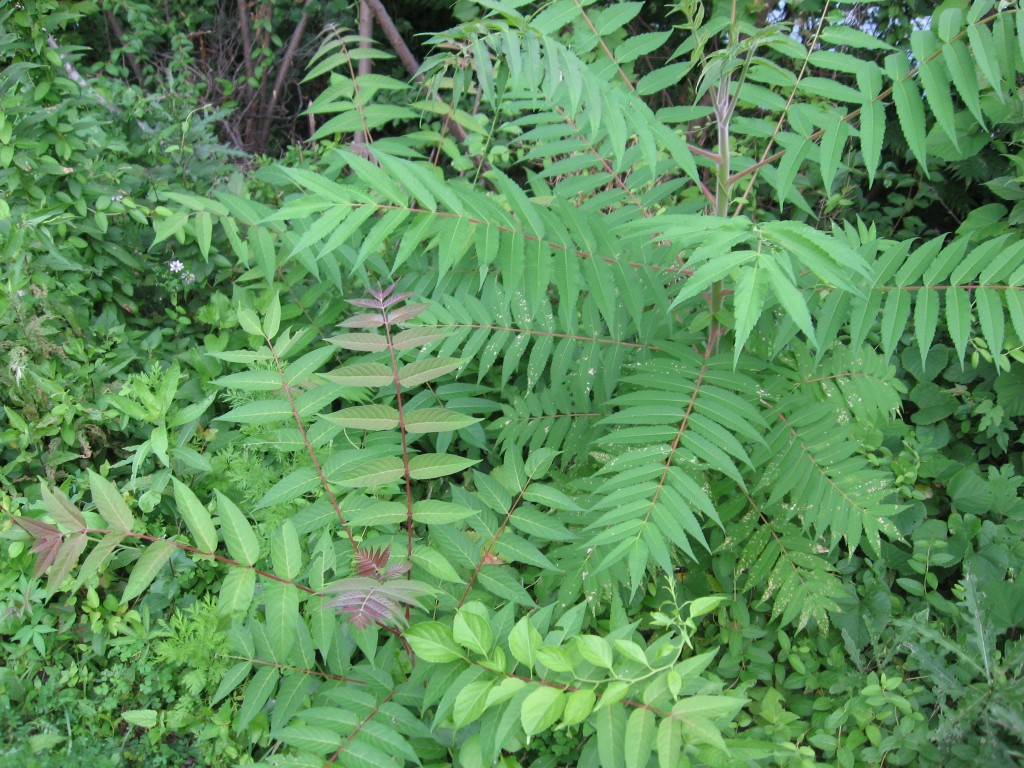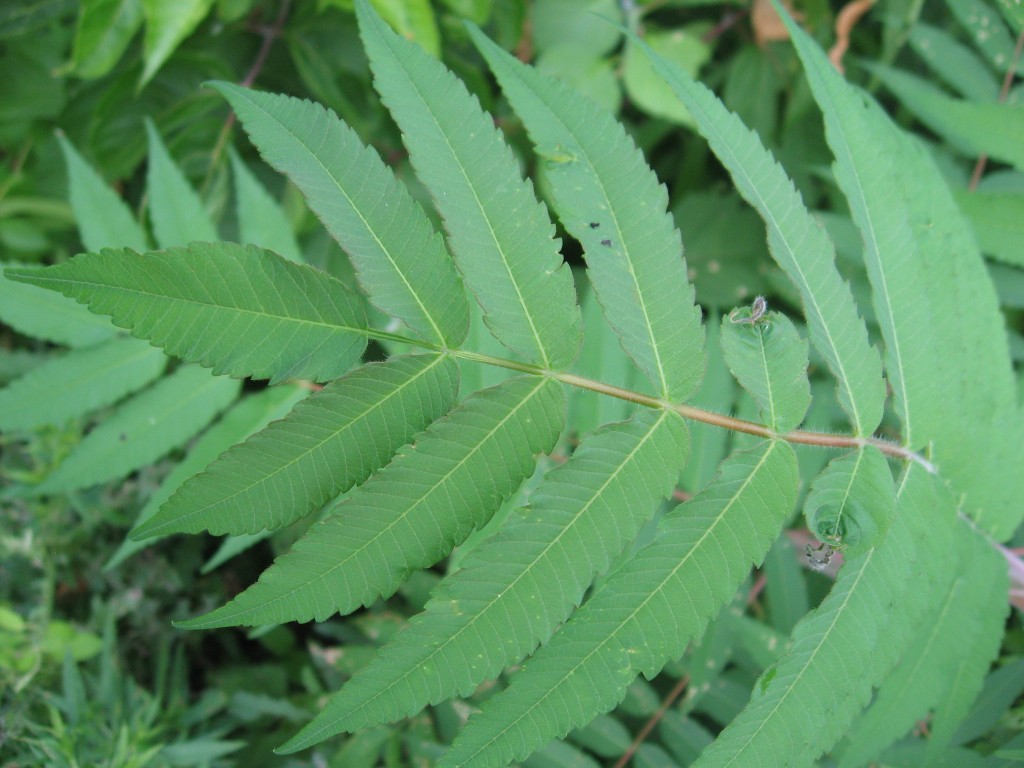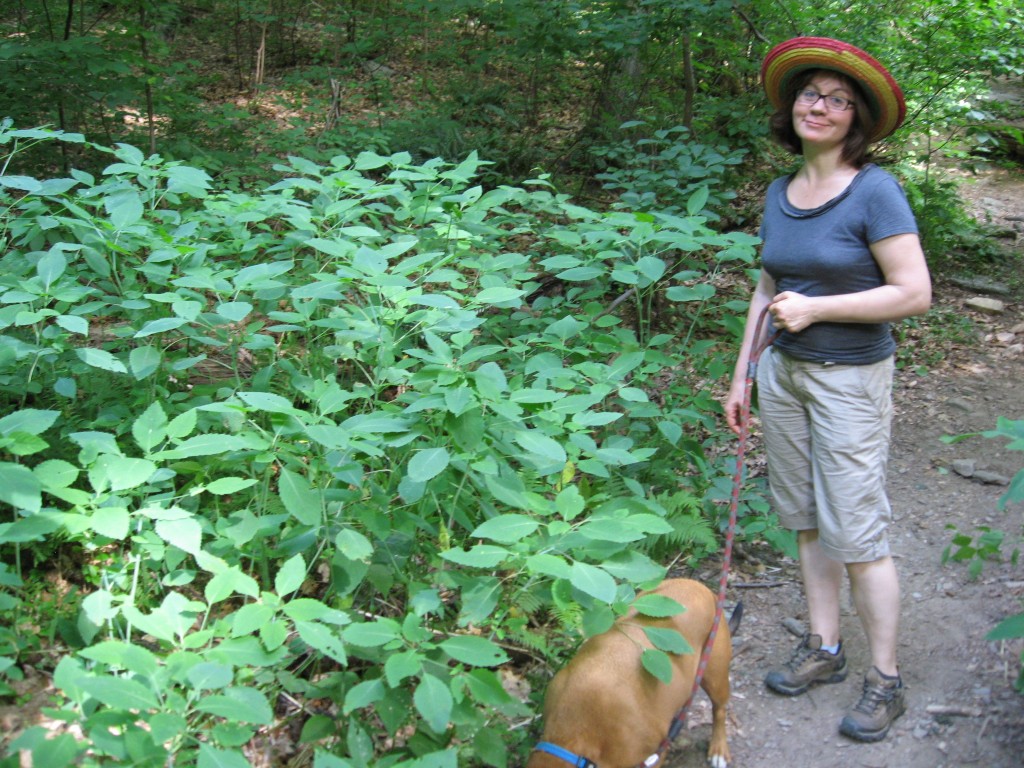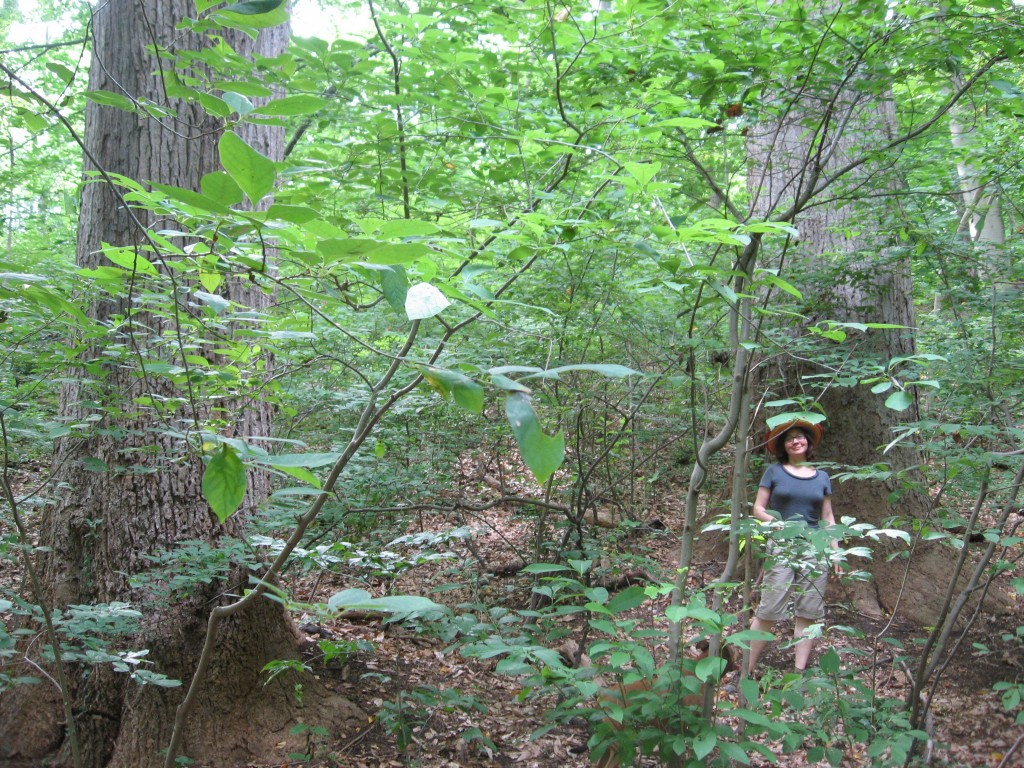Hamamelis virginiana
The leaves in the forest are turning colors and falling. The vase-shaped Witch Hazel shrubs have yellowing leaves and it has blooming yellow flowers!
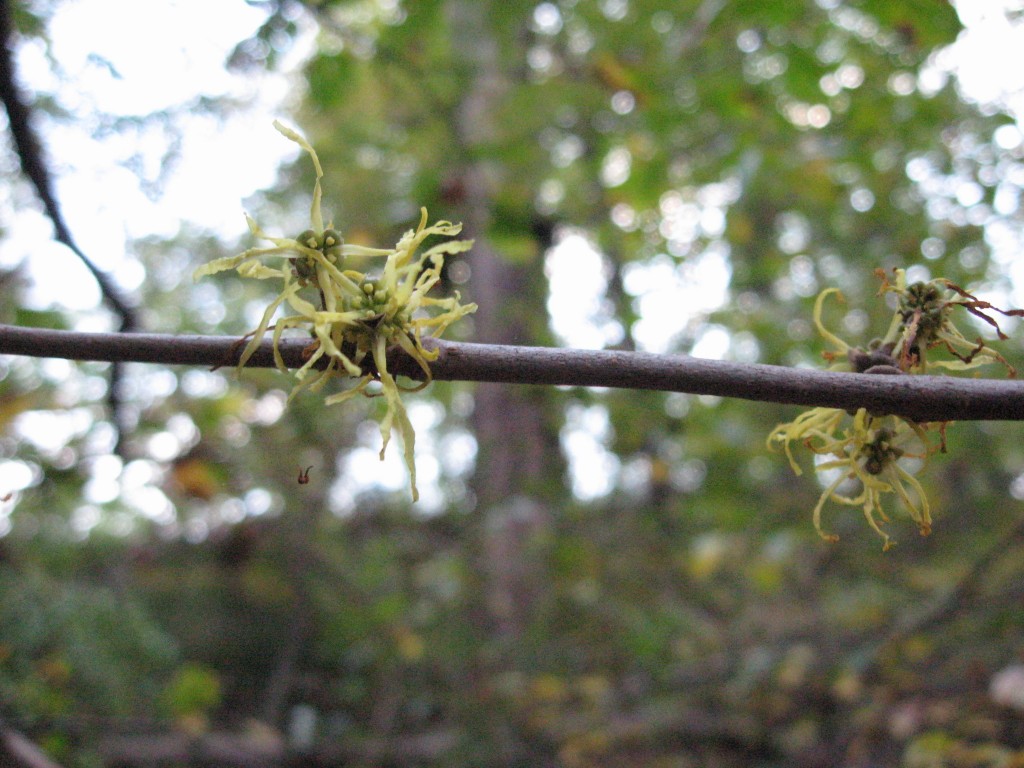
This native understory shrub is going along with the fall program and its flowers can be easily overlooked amidst the backdrop of yellowing leaves. Â It is hard to believe that it has just produced these fresh yellow flowers while every other plant around is going into winter dormancy. Â The cold actually helps preserve the flowers, and they stay on longer, giving the plant a whole month-long flowering period.
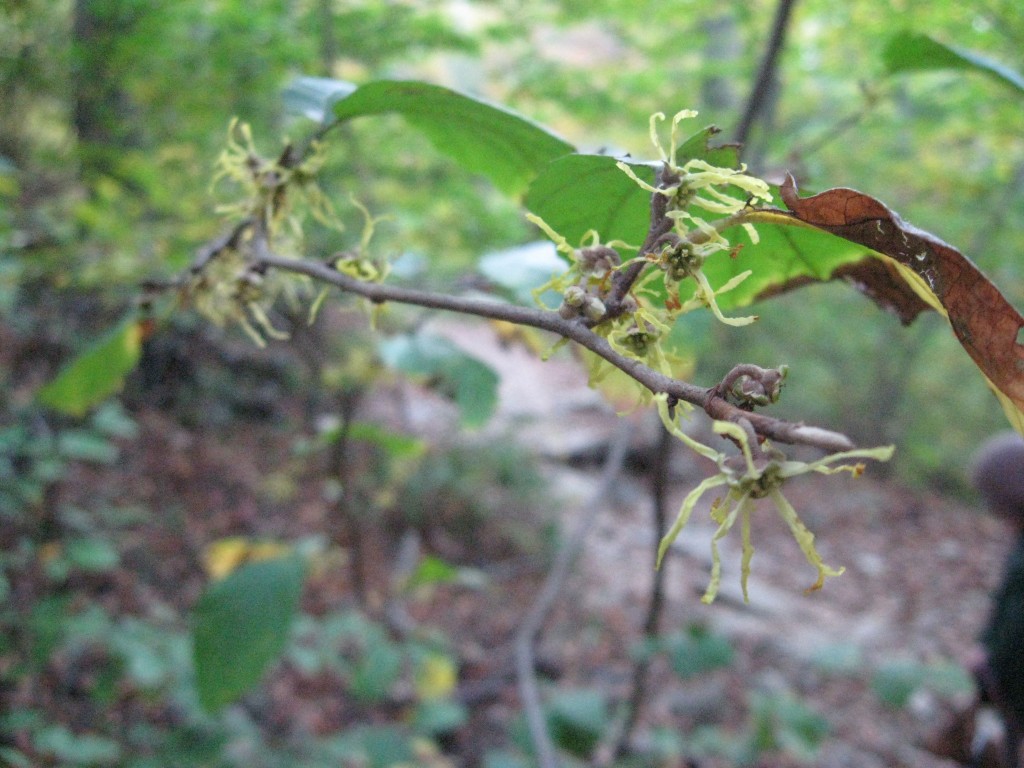
We are cultivating one, and it is a great ornamental shrub that provides plenty of aesthetic beauty to the wintering landscape.
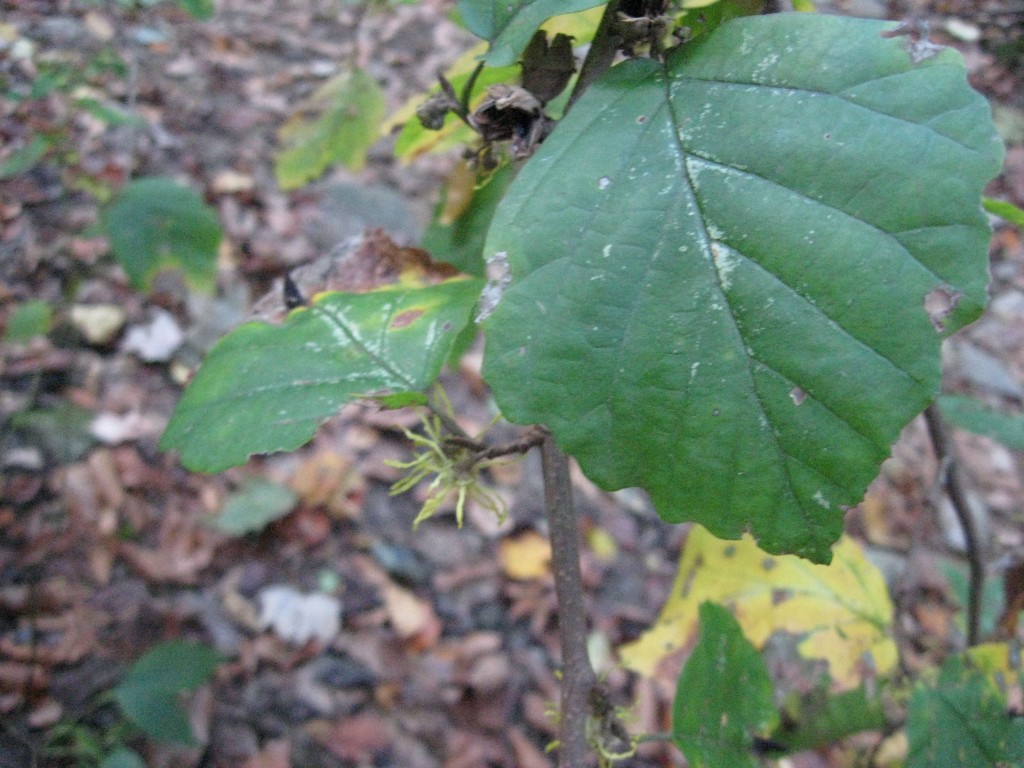
In the photo above can be seen the old seed capsules that have ejected the seeds, possibly 25 feet away! Â We have a friend who has heard them popping the seed capsules while hiking deep in the forest.
The twigs were used as divining rods, which means they were employed to find water. Â The bending sticks was called Wiche in Middle English. Â While no connection to witches, this blooming shrub around Halloween has our imaginations going.
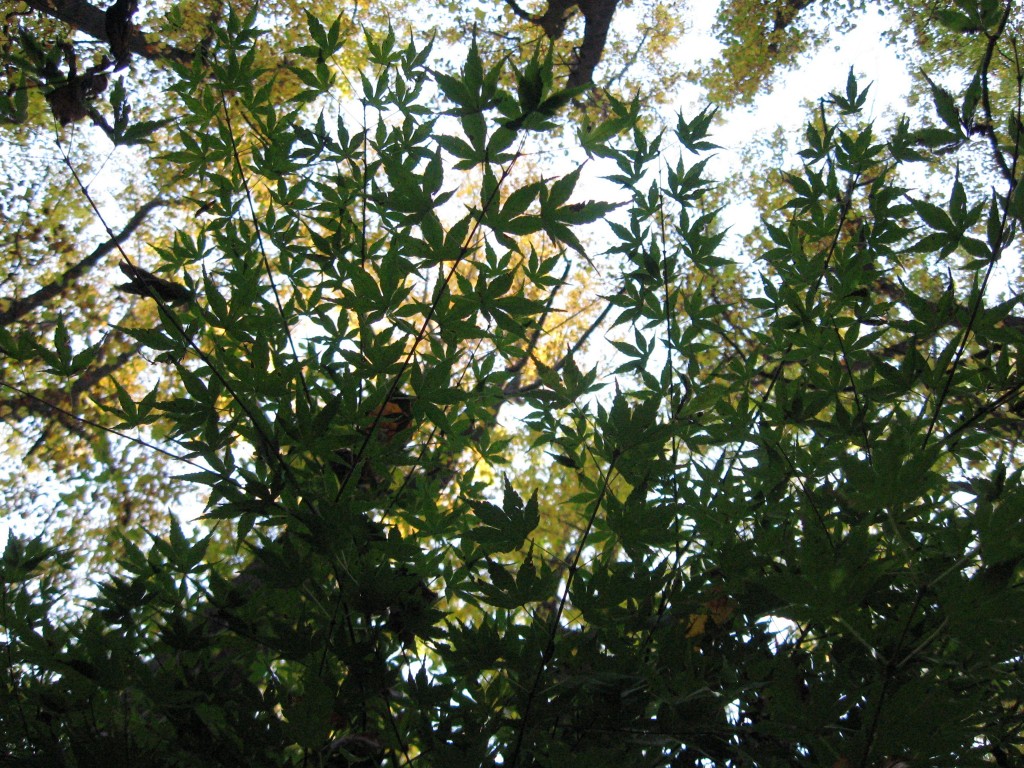
Acer palmatum
Deeper into the forest we ventured and we climbed a hillside, off the more populated trail. Â It got darker and darker very suddenly. We looked up through a massive thicket of AAAAAAAAAAAUUUUUUUUGGH!!!!!!!! – Â Japanese Maple!
Run for the hills! Â No! The hills are covered with them. Â They are everywhere! Â We’re trapped! Â The leaves are shading out everything in sight! They are growing like mad! Â They’ve cross-pollinated! Â They are reverting to the straight species just like found in the wild in Japan, Korea, China and parts of Mongolia and Russia! Â The straight species is not a pretty sight in the natural forest of the Wissahickon Valley.
Let’s not panic, while this is a creepy place, there is still a native plant here and there. Â At least for now. Â The native plants may be able to lead us out of this horrifying scene.
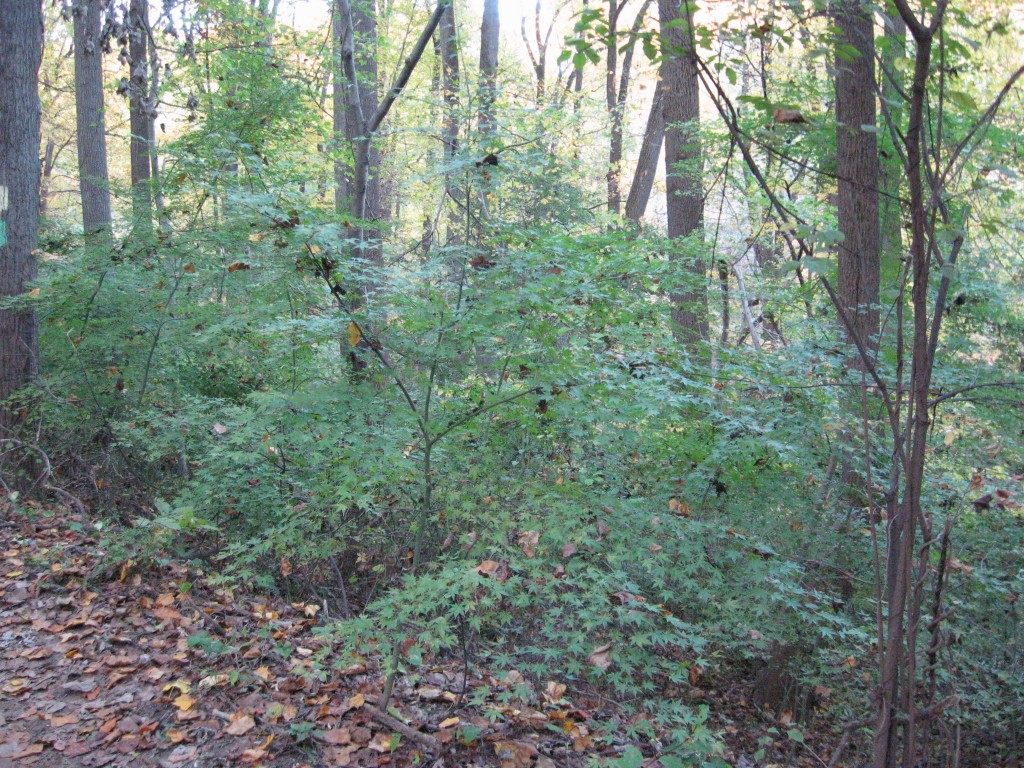
What is more frightening is that if we make it out of here and tell local homeowners about our terrifying experience, they could be dismissive or even hostile. Â How will we ever explain to them the horrors of escaped Japanese maples in the natural lands without them getting a bit itchy? Â These trees are beloved garden ornamentals. Â It costs hundreds of dollars to have a small one in your yard. Â In some neighborhoods it seems as if they are required plantings!
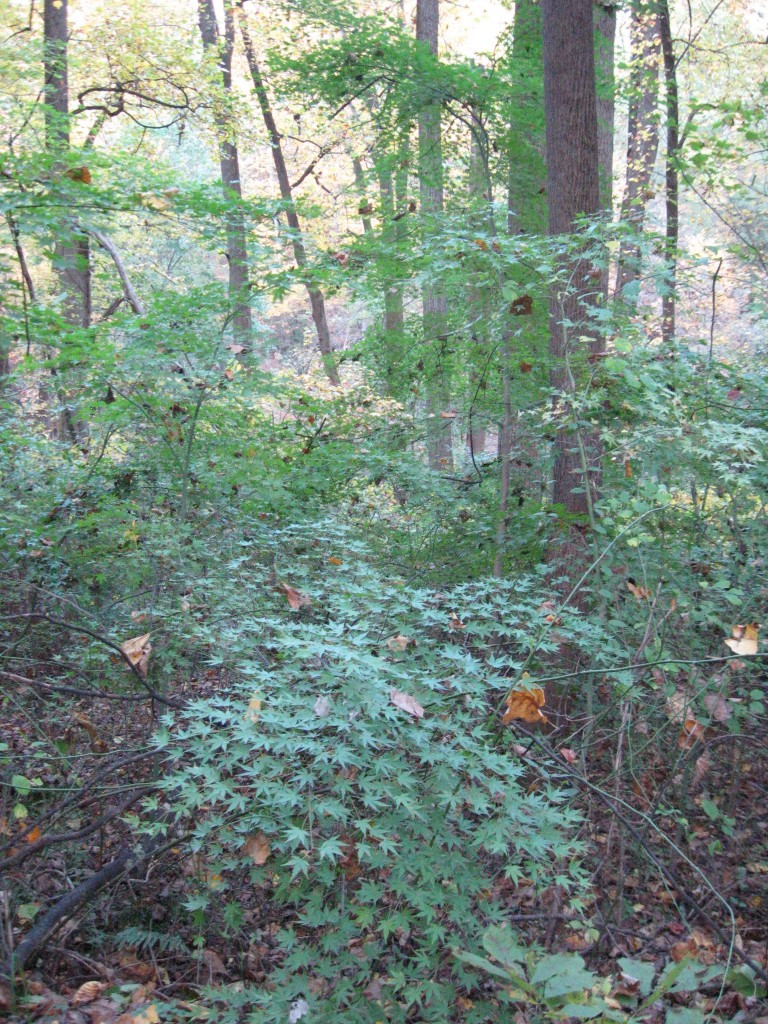
How will we ever explain in the simplest of language that an ornamental cultivar that everyone has in their yard and has a beautiful shape and deep red leaves is now a potential hazard to our natural forests? Â That it seeds itself prolifically, and it is highly variable outside of cultivation, resulting in green leaves and a non-compact shape and an adaptability to a variety of conditions. Â Without any predation (Deer have no taste for it), these conditions are ripe for this plant to become an invasive.
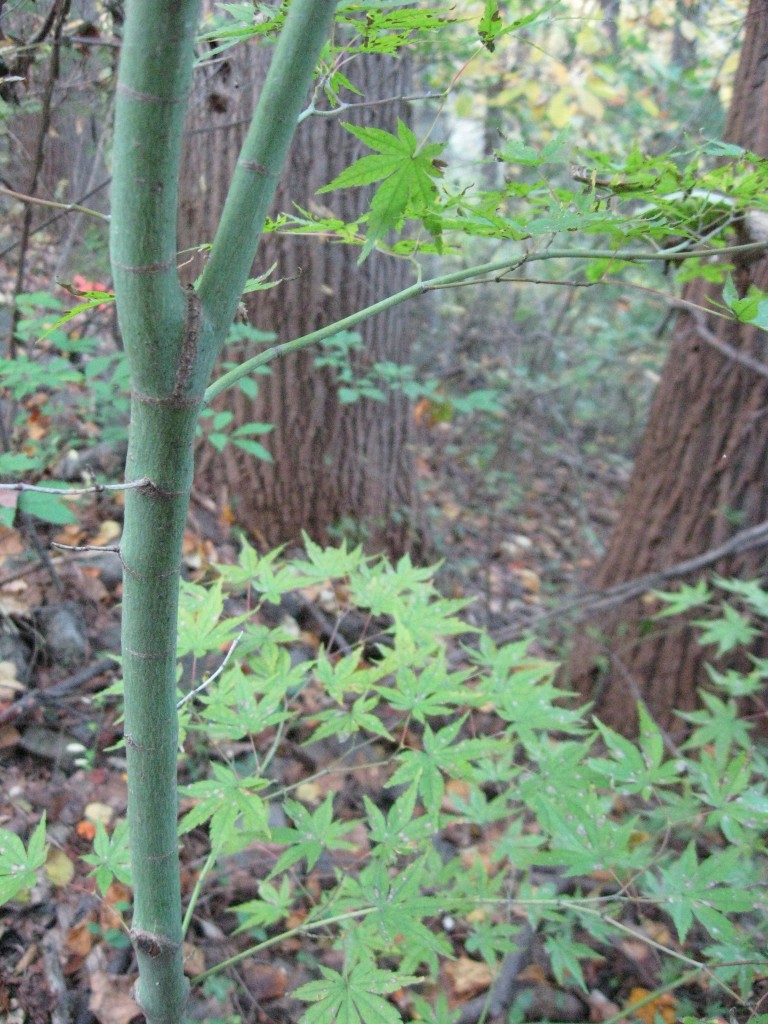
Looking ahead, the future of the lands we come across in life are always facing serious challenges, and when it comes to this emerging invasive, Japanese Maple, it is easy to visualize whole invasions that wipe out native forests in the next 100 years. Â The Sanguine Root recommends against planting this tree.
We survived the invasion of our Sunday afternoon in the Park.
We had a Japanese Maple in our yard, which has been removed.  We find them frequently in Morris Park, and we yank them out of the soil, and let them die and decompose on the surface of the forest floor, where they will  hopefully become a native plant .



